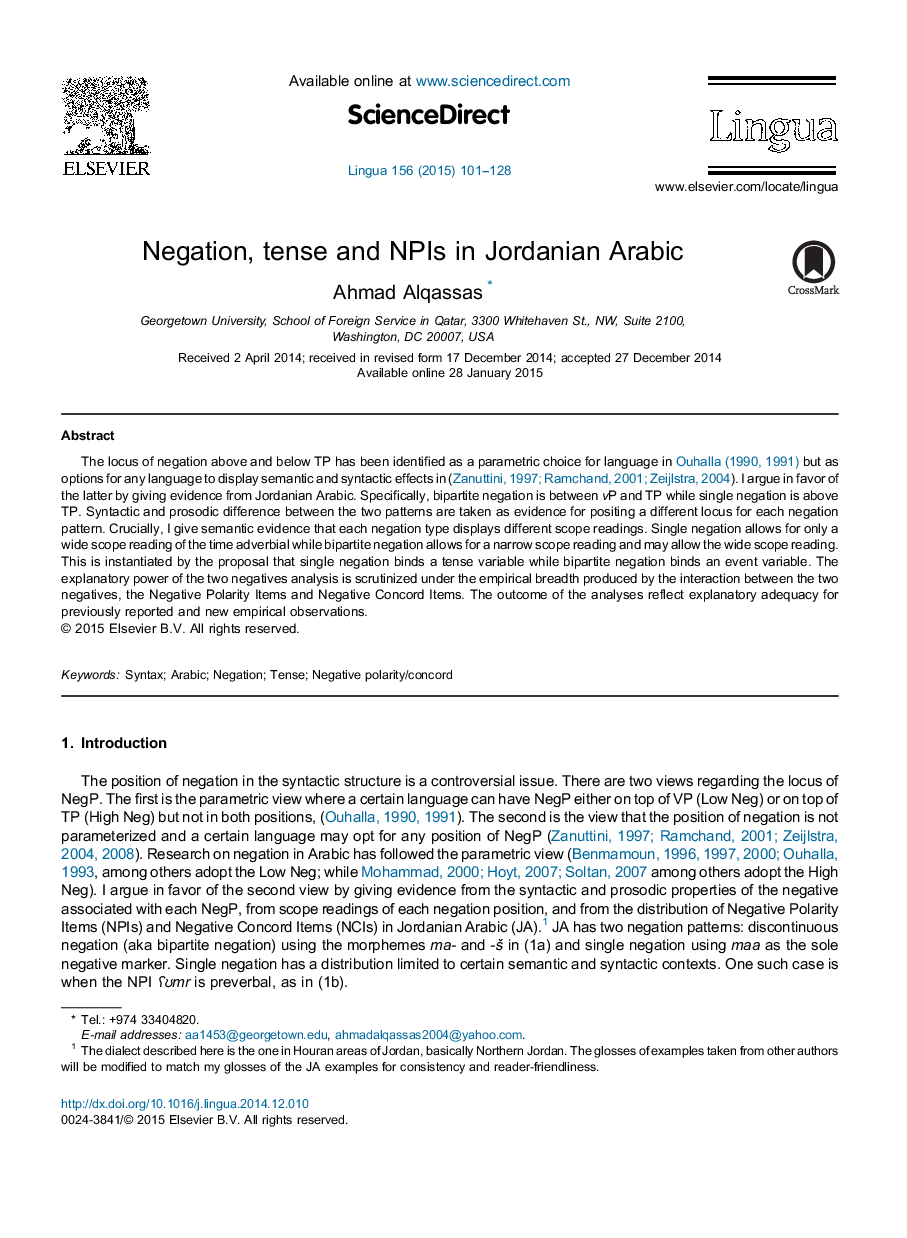| کد مقاله | کد نشریه | سال انتشار | مقاله انگلیسی | نسخه تمام متن |
|---|---|---|---|---|
| 935358 | 1475054 | 2015 | 28 صفحه PDF | دانلود رایگان |

• Language may opt for the position of NegP below and above TP.
• NegP above TP binds a tense variable, while NegP below TP binds an event variable.
• Bipartite negation is below TP and single negation is above TP.
• ʕʊmʊr ‘ever’ is a TP adverb licensed by NegP above TP.
• Negative operator licenses preverbal NCIs when negative markers fail to do so.
The locus of negation above and below TP has been identified as a parametric choice for language in Ouhalla, 1990 and Ouhalla, 1991 but as options for any language to display semantic and syntactic effects in (Zanuttini, 1997, Ramchand, 2001 and Zeijlstra, 2004). I argue in favor of the latter by giving evidence from Jordanian Arabic. Specifically, bipartite negation is between vP and TP while single negation is above TP. Syntactic and prosodic difference between the two patterns are taken as evidence for positing a different locus for each negation pattern. Crucially, I give semantic evidence that each negation type displays different scope readings. Single negation allows for only a wide scope reading of the time adverbial while bipartite negation allows for a narrow scope reading and may allow the wide scope reading. This is instantiated by the proposal that single negation binds a tense variable while bipartite negation binds an event variable. The explanatory power of the two negatives analysis is scrutinized under the empirical breadth produced by the interaction between the two negatives, the Negative Polarity Items and Negative Concord Items. The outcome of the analyses reflect explanatory adequacy for previously reported and new empirical observations.
Journal: Lingua - Volume 156, March 2015, Pages 101–128